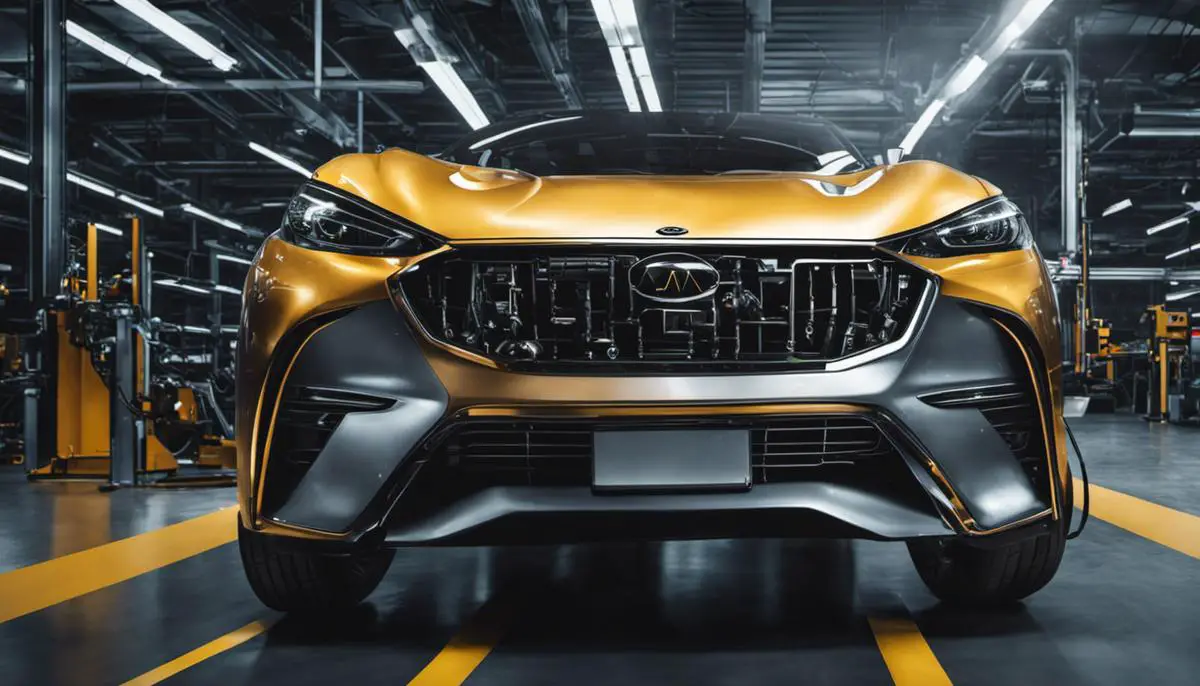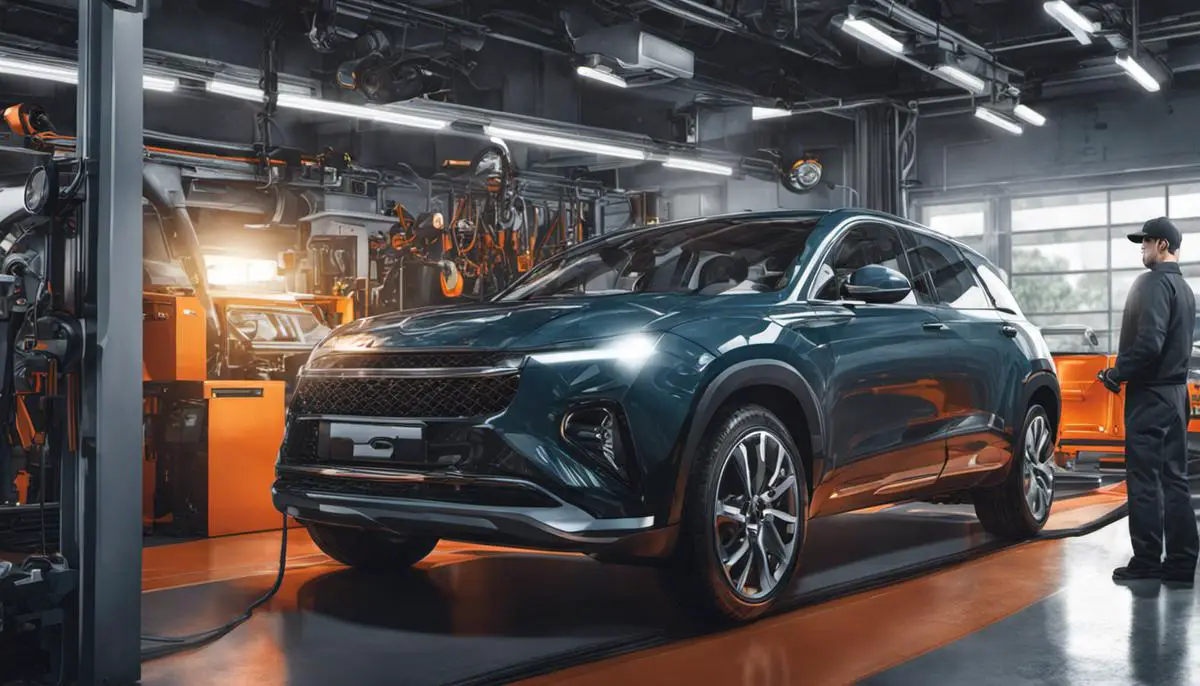Harnessing AI for Effective Vehicle Maintenance
Artificial Intelligence, commonly referred to as AI, is causing a significant stir across numerous sectors with its promising capabilities and transformative potential. One such sector ripe for digital disruption stands as vehicle maintenance, which can immensely benefit from AI and its multifarious applications. Not only can AI streamline and expedite various maintenance tasks, but it can also improve accuracy and predictability, significantly enhancing vehicle performance and lifespan. This discussion dives deep into the realms of AI’s integral role in vehicle maintenance, starting from its fundamental understanding, its current uses, real-world case studies, challenges, and potential future trends.
Understanding AI in the context of vehicle maintenance
What is AI (Artificial Intelligence)?
Artificial Intelligence, commonly abbreviated as AI, is a branch of computer science that focuses on creating smart machines capable of performing tasks typically requiring human intelligence. These tasks include learning, reasoning, problem-solving, perception, and language understanding. AI has two main types: Narrow or Weak AI, which is an AI system designed and trained for a particular task such as voice recognition, and General or Strong AI, which is an AI system with generalized human cognitive abilities.
AI in Diverse Applications
AI can be found in a variety of applications across different industries. From health and banking to weather predictions and retail, AI is significantly changing the way businesses operate. It supports decision making, streamlines processes, and offers personalized experiences. For instance, AI is used in healthcare for disease identification and health prediction, while in finance, it’s used for fraud detection, portfolio management, and customer service through AI chatbots.
AI Techniques: Machine Learning and Predictive Analytics
Two important techniques under AI are machine learning and predictive analytics. Machine learning is an AI method where systems learn from data, identify patterns, make decisions with minimal human intervention, and improve from experience without being explicitly programmed. Predictive analytics uses historical data, statistical algorithms, and machine learning techniques to predict future outcomes. It collects data from the existing data set and identifies trends to forecast future outcomes.
AI in Vehicle Maintenance
When it comes to vehicle maintenance, AI has far-reaching implications. It has the potential to create safer, more reliable, and more efficient vehicles. AI can help predict and prevent mechanical failures, thereby enhancing driver safety and reducing maintenance costs. Predictive maintenance enabled by AI can notify your vehicle when it’s time for a tune-up or if certain parts need replacement.
Machine Learning in Vehicle Maintenance
Machine learning is increasingly being used to monitor vehicle health. It helps detect anomalies in vehicle performance and prevent breakdowns before they happen. For instance, machine learning can process data from various sensors in a vehicle, like the engine temperature sensor, oil sensor, and tire pressure sensor, among others. These data are then analyzed to anticipate potential faults and breakdowns. The system can alert the vehicle owner or fleet manager in advance, allowing them to take corrective action immediately.
Predictive Analytics in Vehicle Maintenance
Predictive analytics applies statistical analysis and machine learning algorithms to historical and real-time vehicle data to predict future maintenance needs. It helps to detect early signs of system failure and schedule proactive maintenance, reducing downtime and maintenance costs. The technology can predict component lifespan and reduce unexpected failures. An intuitive dashboard can provide predictive insights on major systems like battery health, brake wear, or engine health, helping prolong vehicle lifespan.
In the evolving landscape of modern technology, artificial intelligence (AI) has made significant strides in many aspects, including the sphere of vehicle maintenance. With AI’s outstanding abilities to learn, adapt, and predict, it has become an essential component in maintaining the health and longevity of vehicles. As we witness the continual growth and advancement of AI technology, its integration in vehicle health monitoring and predictive maintenance is likely to intensify, contributing to more effective and safer vehicles.

Current AI applications in vehicle maintenance
Artificial Intelligence in Predictive Vehicle Maintenance
Artificial intelligence has become a cornerstone in the field of predictive vehicle maintenance. This technological approach leverages machine learning algorithms and analytical models with the purpose of predicting maintenance needs before a vehicle suffers a malfunction. It functions by perpetually monitoring and collecting data from crucial vehicle elements, identifying patterns, and discerning irregularities that could suggest potential issues. For instance, specific sensors fitted inside a vehicle could track the wear and tear of brake pads, performance of the engine, or the vitality of the battery. The collected data, amalgamated with AI’s forecasting prowess, can alert vehicle owners about potential problems, advising them to undertake precautionary maintenance when required.
Fault Diagnosis Using AI
Fault diagnosis is another area where AI is transforming vehicle maintenance. Utilizing machine learning models, AI can analyze complex diagnostic fault codes, in addition to real-time telemetry data, to accurately identify mechanical problems. This early and precise detection of faults allows for expedited repairs, preventing further damage and reducing downtime of vehicles. Tesla, for instance, often pushes over-the-air fixes to their vehicles once its AI system detects faults.
AI in Parts Replacement
AI is also impacting the aspect of parts replacement in vehicle maintenance. Algorithms can predict part failures before they occur, saving possible on-site breakdown and further costly repairs. In addition, inventory management could be optimized to ensure needed replacement parts are always in stock, preventing prolonged waiting times for their delivery. For example, companies such as ZF Aftermarket are leveraging AI to predict demand for certain parts.
AI and Fleet Maintenance
AI proves particularly beneficial when it comes to fleet maintenance. Fleet managers are employing AI-powered tools to manage the maintenance of entire fleets of vehicles more effectively and efficiently. Algorithms can monitor the health of fleet vehicles in real-time, recommend predictive maintenance and schedule regular checks. This optimizes the overall operational efficiency of the fleet and reduces unexcited maintenance cost and vehicle downtime.
Advances in AI: A Boon for Vehicle Maintenance
With advances in artificial intelligence (AI), we are witnessing transformative changes in the realm of vehicle maintenance. Leveraging AI predictive maintenance has been instrumental in decreasing unexpected, expensive repairs, extending the lifespan of vehicles, and enhancing safety measures. AI’s aptitude for timely fault diagnoses aids in increased operational efficiency and less downtime for vehicles. Moreover, AI’s role in parts replacement aids in superior inventory management by predicting future demand. When applied to fleet maintenance, AI enables maximized operational efficiency through more effective maintenance scheduling and cost reduction.

Case studies of AI in vehicle maintenance
AI Application in Public Transit: The Case of Keolis Commuter Services
Taking a step further into the application of AI in the industry, we turn to the example set by Keolis Commuter Services. As a public transit authority, they joined forces with Innovien Solutions of Fayetteville to leverage AI for predictive maintenance in their rail systems. The partnership deployed ‘Internet of Things’ (IoT) sensors – powered by AI – on train wheels and tracks, allowing them to predict possible failures before they happened. This AI system interpreted real-time data to prompt preventive maintenance, leading to a decrease in unpredictable breakdowns and enhanced safety measures. The results of this AI integration have been significant, with maintenance costs dropping markedly and operational efficiency seeing a substantial improvement.
AI in Aviation: Case Study – EasyJet and Airbus’ Skywise
In the aviation industry, EasyJet and Airbus joined forces to leverage the power of AI in predictive maintenance. They utilized Airbus’s platform, Skywise, to predict technical issues before they happen, improving reliability and punctuality. With millions of data points analyzed from each flight, appropriate maintenance can be scheduled more efficiently to prevent potential disruptions. Since implementing this AI-based system, EasyJet reported a significant reduction in technical-related flight cancellations.
AI in Automobile Industry: Case Study – BMW
BMW implemented a pilot project using AI in predictive maintenance and quality control in their assembly systems. Using imaging recognition and analytics, the AI system can predict and identify potential assembly line failures before they impact production. The system can analyze up to 100 images per second and make a decision whether a part’s installation is likely to fail, allowing maintenance to be scheduled proactively. This has led to better quality control, lower operational costs, and reduced production downtime.
AI in Shipping: Case Study – Royal Dutch Shell
The Royal Dutch Shell has been harnessing the capabilities of AI in predictive maintenance for their fleet of ships. They have developed an AI-based algorithm using machine learning that predicts maintenance for individual machine components, reducing operational disruptions. The system considers several factors such as weather conditions and hull integrity in real-time to anticipate potential issues. This practice has also brought about optimized maintenance schedules, cost reduction, and improved safety levels.
AI in the Trucking Industry: Case Study – Uptake
In the trucking industry, Uptake, a predictive analytics software provider, has partnered with various trucking companies to deploy AI for maintenance prediction. This tool uses a range of data from the truck’s telematics, temperature readings, and RPM to predict component failures, ensuring better route planning, reduced downtime, and enhanced fuel efficiency. As a result, unplanned servicing events decreased by approximately 35%.
Recent case studies have revealed the transformative impact of artificial intelligence (AI) in optimizing maintenance practices across industries. By leveraging vast pools of data, AI allows for the prediction of potential service disruptions, thus enhancing maintenance efficiency and safety protocols while saving costs. As AI technology continues to evolve and gain widespread acceptance, its benefits in this realm are predicted to multiply.

Challenges in implementing AI for vehicle maintenance
The Substantial Investments Required for AI in Vehicle Maintenance
Despite the promising potential of AI in vehicle maintenance, its adoption can be impeded by the substantial costs involved. The implementation of AI requires complex algorithms, high computational power, and advanced hardware and software systems. The financial investment for procuring these resources may seem daunting, particularly for small auto repair shops. Alongside the initial investment, there are continuous expenses related to system upgrades, scaling, licensing fees, and data storage. Moreover, the implementation of AI necessitates robust security measures to safeguard against potential cybersecurity threats, adding to the overall financial burden.
Education and Training Deficiencies
AI in the automotive industry demand a certain level of technical savvy and proficiency from technicians. These professionals need to be adept at not just mechanics but also at computer science and data analysis, given the sophisticated, tech-driven nature of modern vehicles. With AI added to the mix, there’s an even steeper learning curve. The scarcity of adequately trained individuals who can operate AI systems professionally is another hurdle. Further, there’s also the cost and time expended on facilitating education and training courses to upskill existing staff.
Data Privacy and Security Concerns
AI systems rely heavily on data – they need vast amounts of information to ‘learn’ and optimize their performance. This could necessitate capturing and storing sensitive data from vehicles, such as location and driving behavior data, which may raise serious privacy concerns. Additionally, this data needs to be protected from potential security breaches. High-profile data leaks and hacks have ramped up concerns about the safeguarding of information in AI systems.
Technical Hitches and Regulatory Barriers
While AI holds promise for predictive maintenance, diagnosing complex issues, and making repair shops more efficient, the technology is not infallible. It can sometimes misidentify issues or overlook them, leading to further machine malfunctions and costly repairs, thereby impacting customer trust and satisfaction. Lastly, the lack of clear-cut regulations around the use of AI in vehicles could deter many businesses from adopting the technology. Regulations around AI use are still evolving and uncertain, causing hesitation, especially among smaller businesses that might find it more challenging to navigate these uncharted waters.
AI is paving new ways in many domains, including vehicle maintenance. Although this field has some ongoing challenges in relation to this, it is hoped that as we advance further into the future, our understanding of these technologies will deepen. This will help in overcoming those challenges, opening the gates for a more widespread application of AI to vehicle maintenance.

Future of AI in vehicle maintenance
The Transforming Role of AI in Vehicle Maintenance
Artificial Intelligence (AI), with its profound advancements, is set to significantly transform the realm of vehicle maintenance. As the digitalization of vehicles continues to evolve, especially with the advent of autonomous systems, AI is increasingly moving into the area of predictive maintenance. With the help of advanced algorithms, AI interprets data derived from in-vehicle sensors to forecast potential mechanical problems before they happen. This forward-thinking approach not only minimizes downtime and enhances safety but also prolongs the vehicle’s life.
AI holds considerable promise in the area of preventive maintenance. An AI-powered vehicle can self-assess its own performance and send advance notifications to the owner or mechanic about any emerging issues. More impressively, AI can work in synergy with complex algorithms that have the capability to identify patterns and predict when a component might fail or need maintenance, based on a variety of factors, from how the vehicle is used to prevailing weather conditions and driving patterns.
Incorporating AI with the Internet of Things (IoT) can significantly expand the prospects of AI in vehicle maintenance. Through the use of IoT devices, such as smart sensors installed within vehicles, a tremendously large volume of data is generated. AI’s ability to swiftly handle and interpret this data stream fuels a comprehensive and proactive approach to vehicle maintenance.
Emerging Trends in AI and Auto Maintenance
Emerging trends in AI and auto maintenance are certainly gaining attention. Machine Learning (ML), a subset of AI, for example, can take data from thousands of vehicles, analyze it, and use it to predict maintenance needs more accurately. It examines trends from vehicles with similar characteristics and behaviors, improving the prediction accuracy.
Connected cars, part of the broader IoT, are set to benefit immensely from AI. Connected cars generate copious amounts of data, from engine performance to tire pressure. AI can analyze this in real-time, allowing far more efficient and accurate problem diagnosis than what manually checking components can achieve.
Another promising application is in the integration of AI with Augmented Reality (AR) for vehicle maintenance. AR can provide technicians with real-time data overlays, demonstrating exactly what’s wrong and how to fix it. Leveraging AI, this technology can learn from each repair, increasing its accuracy and efficiency over time.
AI Revolutionizing Vehicle Maintenance Practices
The AI revolution is certainly not leaving vehicle maintenance behind. The potential benefits of AI in vehicle maintenance range from cost savings, reduced vehicle downtime, improved safety, and enhanced vehicle lifespan. AI could now predict a vehicle’s potential failures weeks or even months before they happen. This prediction capability could dramatically reduce the number of unforeseen vehicle breakdowns and lead to safer road conditions for everyone.
The adoption of AI could also see a shift in the way maintenance services are offered. Traditional repair shops may move towards becoming tech companies that analyze vehicle data and offer tailored vehicle maintenance services.
Moreover, OEMs are working on AI-systems that can automatically schedule a vehicle for routine maintenance based on personalized driving behaviors. AI can predict wear and tear on engine components and determine optimal times for oil changes, brake replacements, and tire rotations.
In the future, AI will likely lead the vehicle maintenance industry into new, uncharted territory. The convergence of AI, IoT, and other digital technologies is rapidly transforming this space, pushing it toward data-driven, predictive, and personalized maintenance services.

Indeed, the journey of AI in the realm of vehicle maintenance is only beginning, and continuous evolution seems inevitable. With its promising applications delivering tangible benefits, the impetus towards digitization is driving this field towards a future teeming with possibilities for efficiency, optimization, and innovation. Despite significant challenges, the prospects of AI appear bright, promising to transform the landscape of vehicle maintenance drastically. As we embrace this digital revolution, the fusion of AI, IoT, and predictive analytics in vehicle maintenance is anticipated to unlock new opportunities for improved service, cost-effectiveness, and vehicle longevity.
Writio: An AI content writer for publishers and blogs. This article was crafted by Writio.
